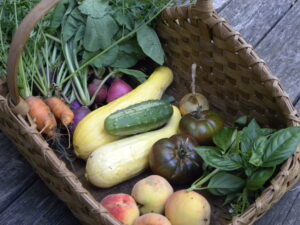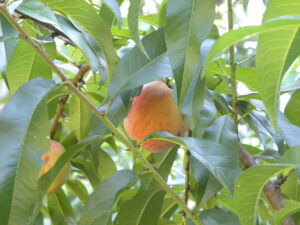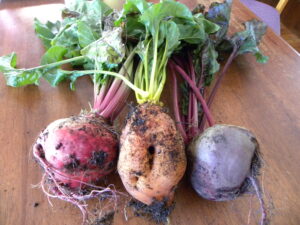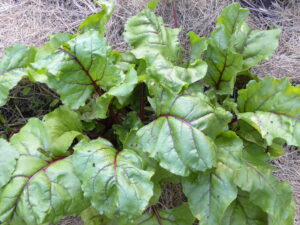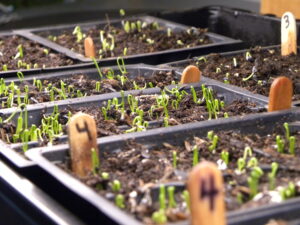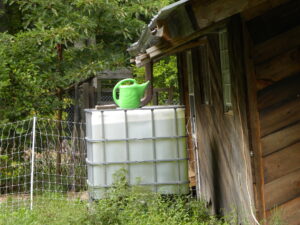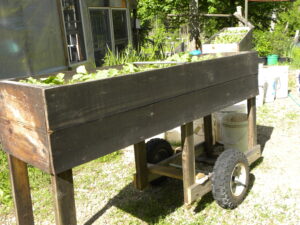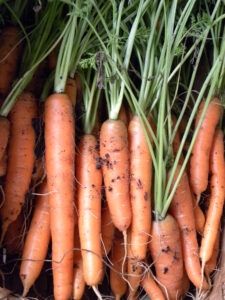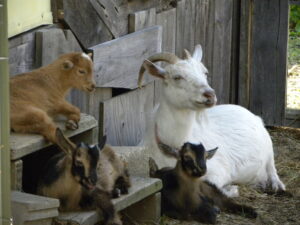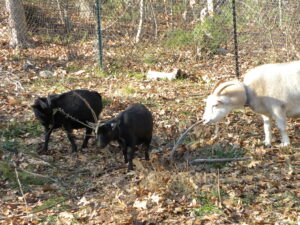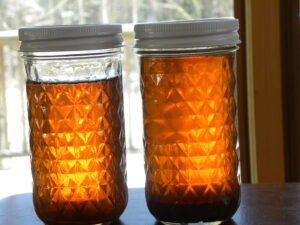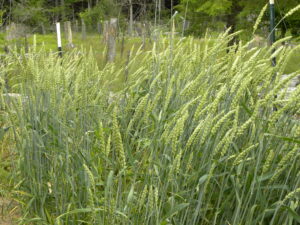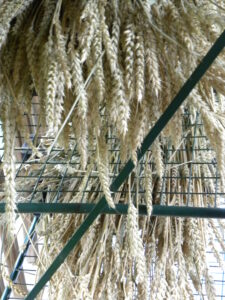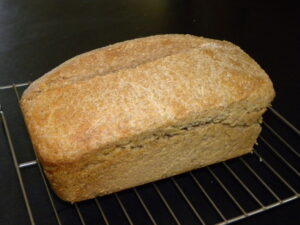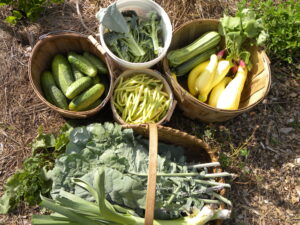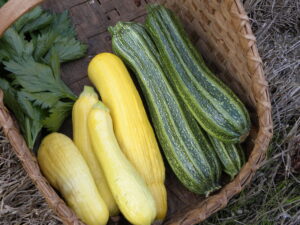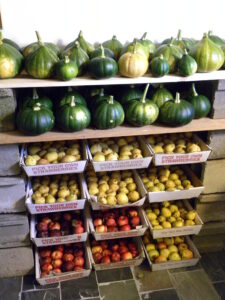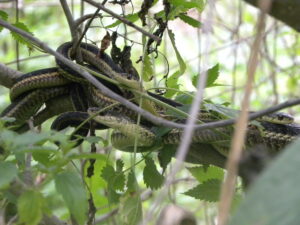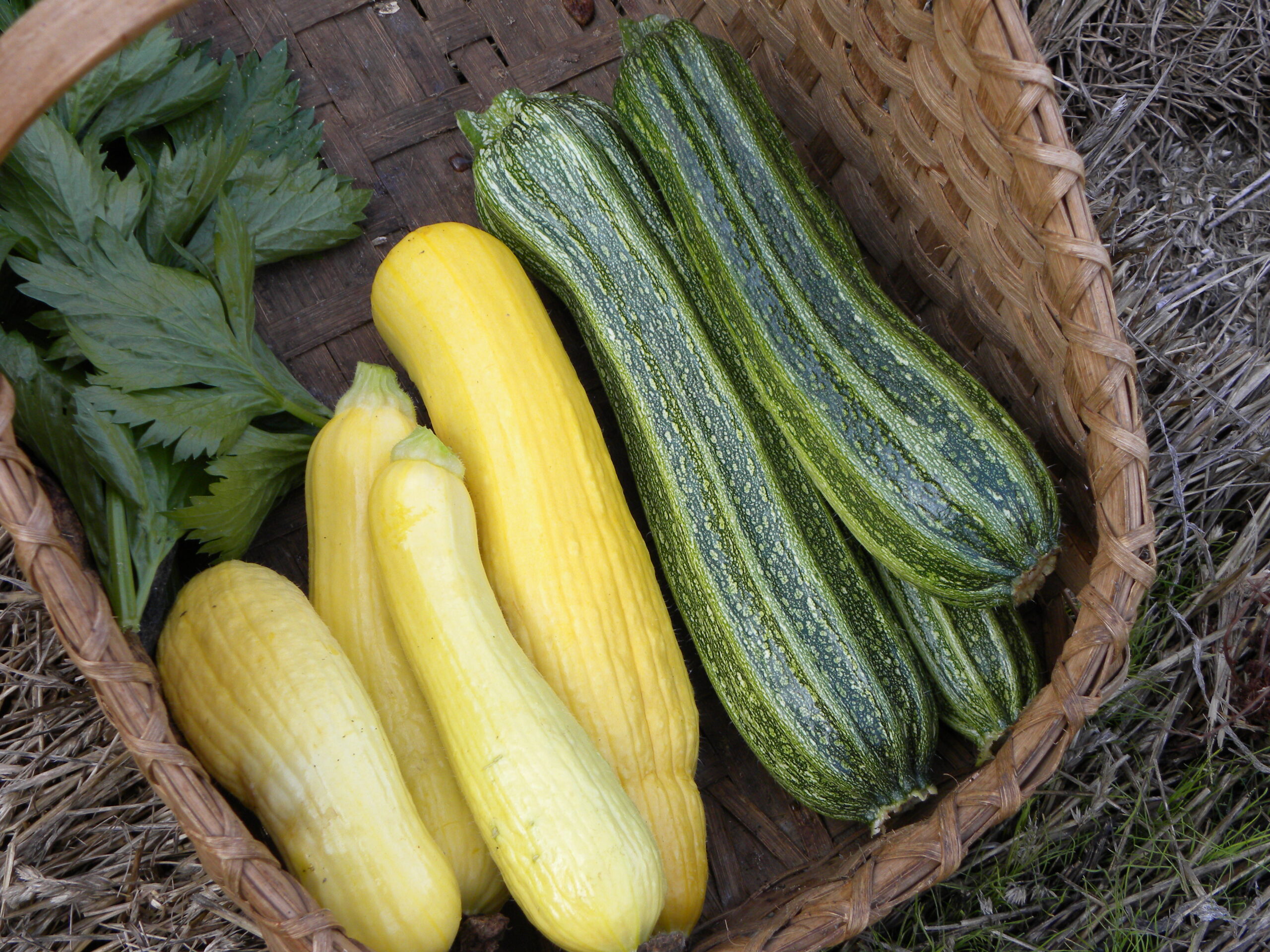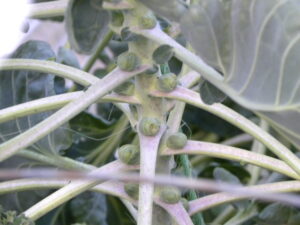When it first started raining, I was thrilled. We were starting the growing season NOT in a drought! But, as you know, it just kept coming, enough to break records in June and July and cause terrible floods in some places (we did not have that here). While I continue to remind myself to be grateful there is water coming our way regularly, it’s also true that there is such a thing as too much. As Brene Brown said: the opposite of scarcity is not abundance, it is enough.
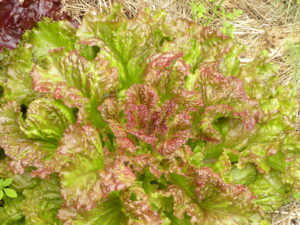
A Good Year For Lettuce
Early on in this rainy season most of our plants grew quickly and looked great. I thought we were being set up for an exceptional gardening year and harvest. Instead, the excessive ups and downs and weird weather patterns have hindered our production.
It really started last winter.
The spring bloom – or lack thereof – confirmed that the February polar vortex did wipe out this year’s peaches. Peaches are an important crop for me. You may have read about my August and September canning marathons putting up 50 plus quarts of peaches each year. So, I did mourn that loss… but I hoped that the berry season might make up for it, since fruit set on the bushes around here looked great. There was also a late frost in May, but, luckily, that barely touched us.
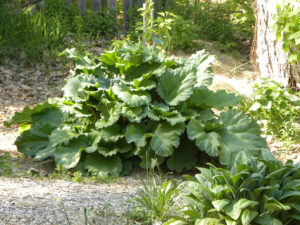
A Rhubarb Plant Almost As Tall As I Am!
It was also a chilly spring so the heat lovers stagnated, like our eggplant. But the kale, collards, broccoli and Brussels sprouts flourished. The lettuce was huge, tasted great, and lasted extra long before bolting. The rhubarb and asparagus were big and beautiful.
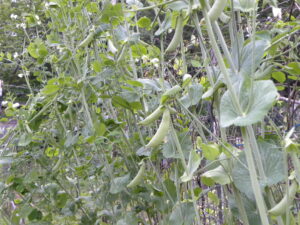
Looking Up At The Peas
Most of our plants looked fabulous, truly lush in the gardens, orchards, pasture and wild places. Many of our climbers – pole beans and peas especially – outgrew their normal trellising, we added more, and they continued to keep going. The leeks, root crops, corn, and flowers for pollinators were vibrant and big. It was such a contrast to last year’s meager greenery in the drought.
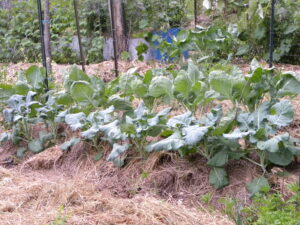
Brussels Sprouts & Broccoli, Well-Mulched
But along with the crops growing well, the weeds proliferated. We have a low-weed system, using lots of mulch and not tilling at all. Despite that, there has still been weeding to do, especially in our newer orchard areas where there is a strong seed bank and the trees are too small to shade out new growth. So, while we didn’t have to water at all, we have had more than enough unwanted plant removal to take up that time. At least the goats love most of the volunteer plants so it doesn’t seem like a such a waste.
As the season has been moving along, many of our yields are just not spectacular. The peas grew tall and tasted great – but died after just a few weeks. Our zucchini plants had a similar trajectory. Our rattlesnake pole bean vines are huge, but not that productive. My first plantings of cukes wilted quickly – I’m not entirely sure which disease it was, but in the wet conditions it hit them hard. My later plantings look ok, but since it continues to be so rainy I won’t be surprised if it gets to them, too. The eggplant and tomatoes are only trickling in. Blueberry picking was awesome – until the spotted wing drosphilia numbers rose. We used to have over a month of picking, but the past few years only get about 2 weeks until the berries get mushy because of the larvae.
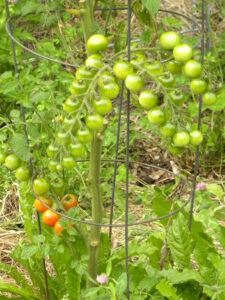
Tomatoes Ripening Very Slowly
Also, even though there have been some serious spikes in heat, we have not had the extended, less intense heat that many plants produce best in. It felt great to us humans when the heat broke… but with highs only in the 70s, lots of plants slowed way down.
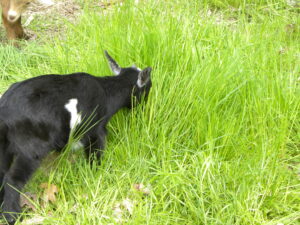
Lush Pasture for the Goats
Not everything is doing badly. Some other crops look good: winter squash, root crops, dry beans, yellow summer squash, our unusual berries (clove currants and jostaberries especially). Our basil has been excellent and most of our garlic is big and beautiful (the red variety is smaller than usual). Our animals are thriving with such lush grass and greenery to nourish them.
However, overall, this is turning out to be our least productive growing season yet.
In these difficult conditions, we are once again glad that we discovered permacultural principles and growing methods. Having healthy soil filled with organic matter and humus can moderate the extremes of wet and dry. Keeping the soil covered with plants and mulches suppresses weeds, retains moisture when needed, and lowers soil temperature when it is hot and sunny. An emphasis on plant and animal diversity means we never have a year that is a total loss. Earthworks such as swales help our land slow and capture the bursts of heavy rain, stopping erosion and keeping the groundwater and well charged. I can’t imagine trying to live this way without all that in place.
Permaculture also encourages big picture thinking, beyond our own place and time.
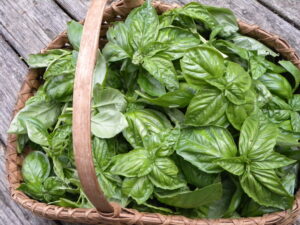
A lot of work goes into growing good food
It is very likely that weather will continue to be volatile and hard to predict, probably more than we’re currently experiencing, and it is going to be challenging to grow food. People seemed to understand the importance of maintaining our food supply when shelves were emptying at the start of the pandemic and then with recent price spikes at grocery stores. I’m not sure if people grasp how much harder it is to grow food in these times of climate disruptions.
I don’t want to frighten anyone – I am not sure fear is a great motivator of real, intelligent change. I hope that we can become aware of these issues, even though they are scary, and deepen our appreciation for food and farmers and our planet’s life giving systems so much that we are inspired to act in support of all of them. There are many ways to do so. Here’s one:
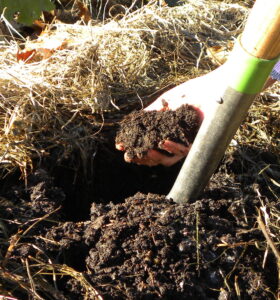
Building Good Soil Is Possible
Right now the Farm Bill is being worked on in Congress (it comes around about every 5 years). It is a great opportunity to ask for change. The bill’s current priorities favor agribusiness and destructive technological and market schemes. Instead, these resources could support the small farmers who actually feed most humans and real solutions addressing environmental problems. How food is grown deeply matters – it’s why Steve and I have committed much of our lives to doing it well! Agricultural methods can destroy the earth or help to stabilize the water cycle, put carbon where it belongs, stop soil loss, reverse desertification and more. You can learn about how to advocate for change at NOFA-NH and AFSC.
Back at the homestead, it’s hard not to get discouraged in a year like this, but we will keep our own gardens going and hope you will, too, as another way to strengthen our resilience and food security and lessen the stress on the biosphere. We’ll also remember to take in the beauty all around us this season, such as the extraordinary vista of blooms in our front yard.
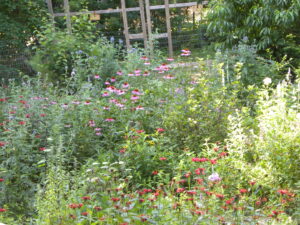
Our Herb & Pollinator Garden

